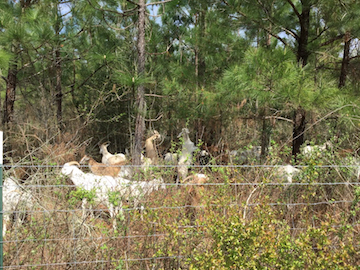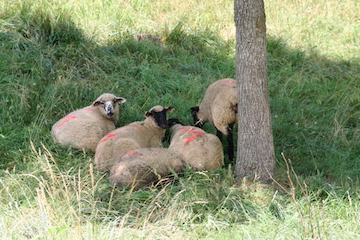Limited Resource Farmers Using Small Ruminants in Woodlands to Create a Silvopasture System

Two common methods to establish silvopasture system is either planting trees on pastureland or thinning trees in the existing forests to create space for growing the understory vegetation. Due to economic constrains, limited resource landowners interested in adopting silvopasture system look for alternative methods to establish silvopasture as a way of land management. Apart from the usual methods of adopting silvopasture, farmers in West Alabama are using small ruminants to clear the understory vegetation that are naturally grown in the forest stands.
- Details
- Written by Susan K. Bambo, PH.D., Federation of Southern Cooperatives/Land Assistance Fund, Epes, Alabama.



